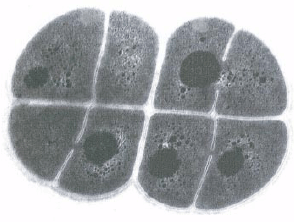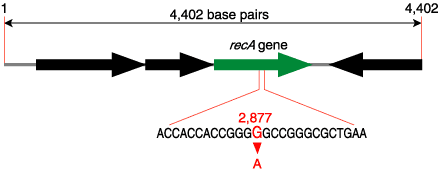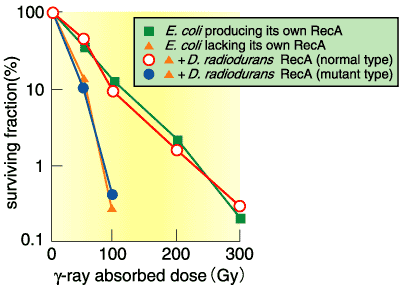Deinococcus radiodurans is known as a representative of radiation resistant bacteria (Fig. 5-14). The radiation resistance of this bacterium is approximately 1,000 fold higher than that of human cells. Many research results have supported the possibility that D. radiodurans possesses extremely proficient mechanisms by which enormous amounts of DNA damage are repaired accurately. D. radiodurans has a recA gene that plays a central role in DNA recombination repair and is conserved in almost all organisms. From previous studies, it has been believed that the extraordinary radiation resistance is due to a distinct function of the D. radiodurans RecA protein produced from the recA gene. We performed several experiments to reconfirm this published theory.
A radiation sensitive mutant has been isolated from D. radiodurans. By analyzing its nucleotide sequence, we identified a mutation site in the radiation sensitive mutant (Fig. 5-15). The mutation site was located in a recA-coding region, indicating that the D. radiodurans recA gene has an indispensable function in extraordinary radiation resistance. However, from our experiments, it was revealed that the D. radiodurans RecA protein shared the functions of RecA homologs from other radiation sensitive organisms (Fig. 5-16). Our result reverses the published theory of the distinctiveness of D. radiodurans RecA. The result further indicates that the presence of the recA gene is necessary, but not enough to account for extraordinary radiation resistance, and strongly suggests that D. radiodurans has other important genes that may cooperate with the recA gene. |


